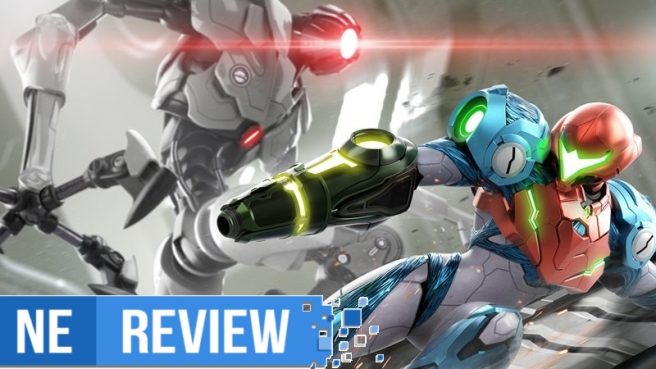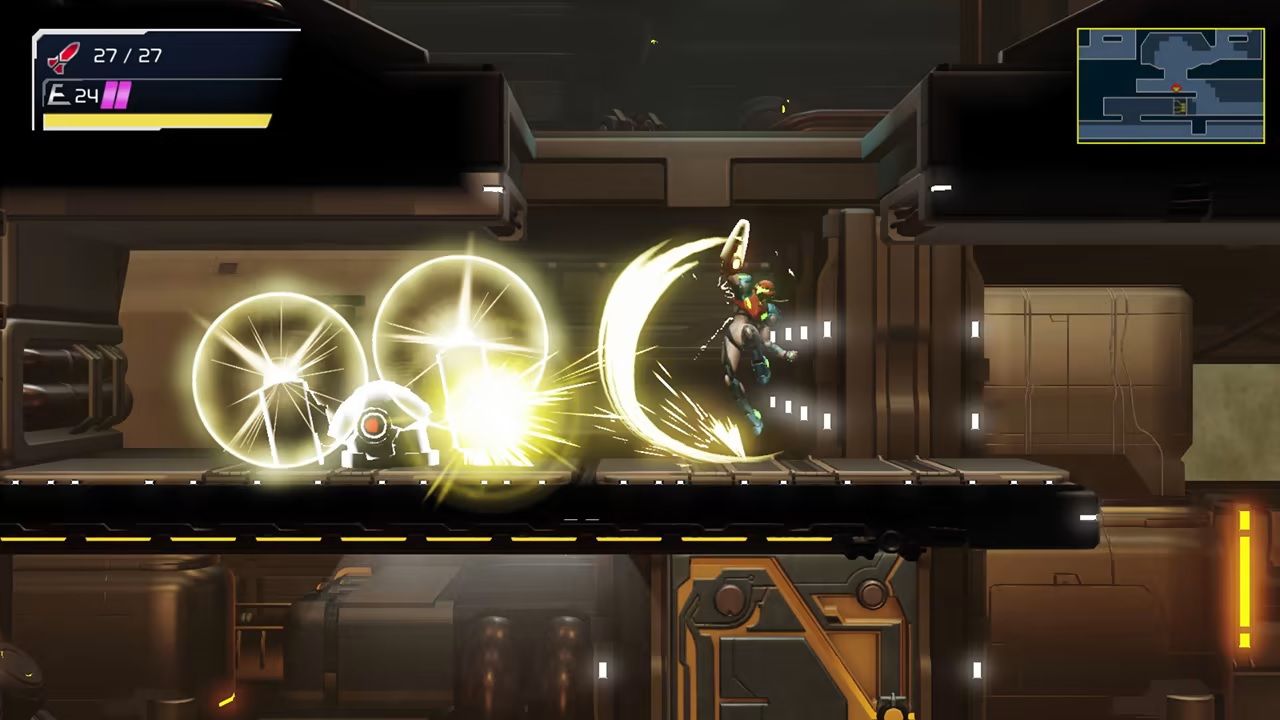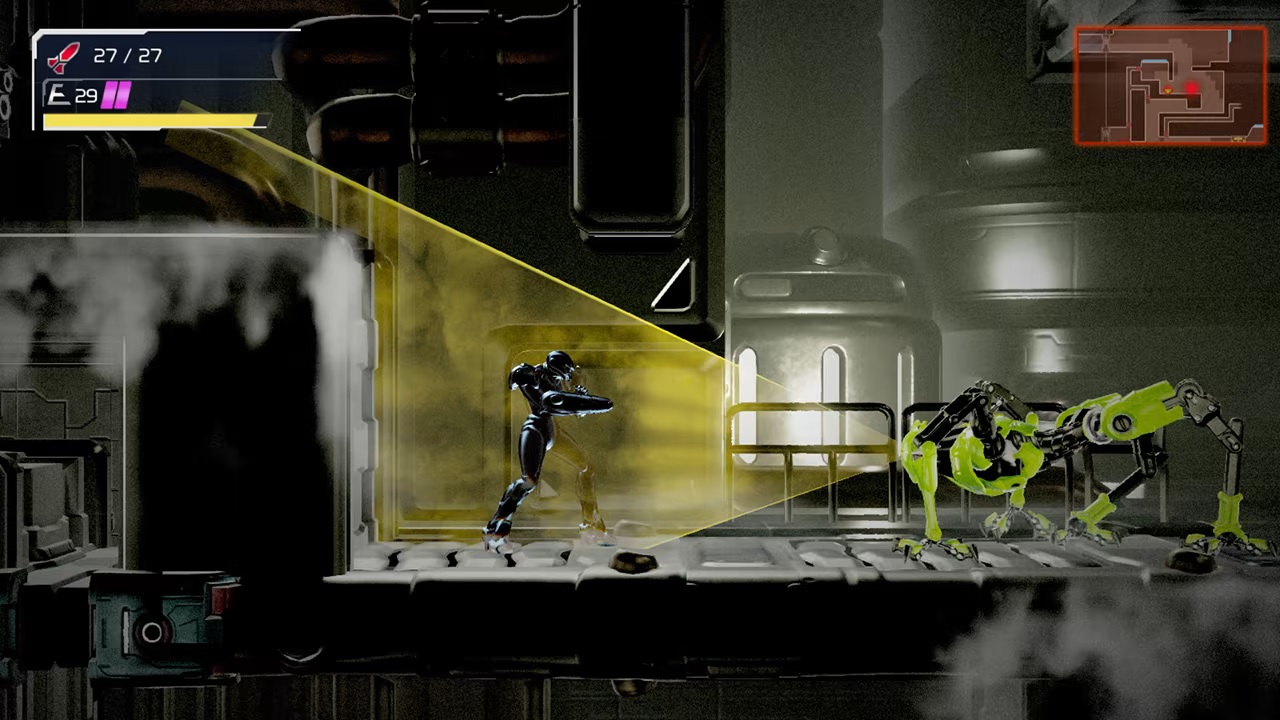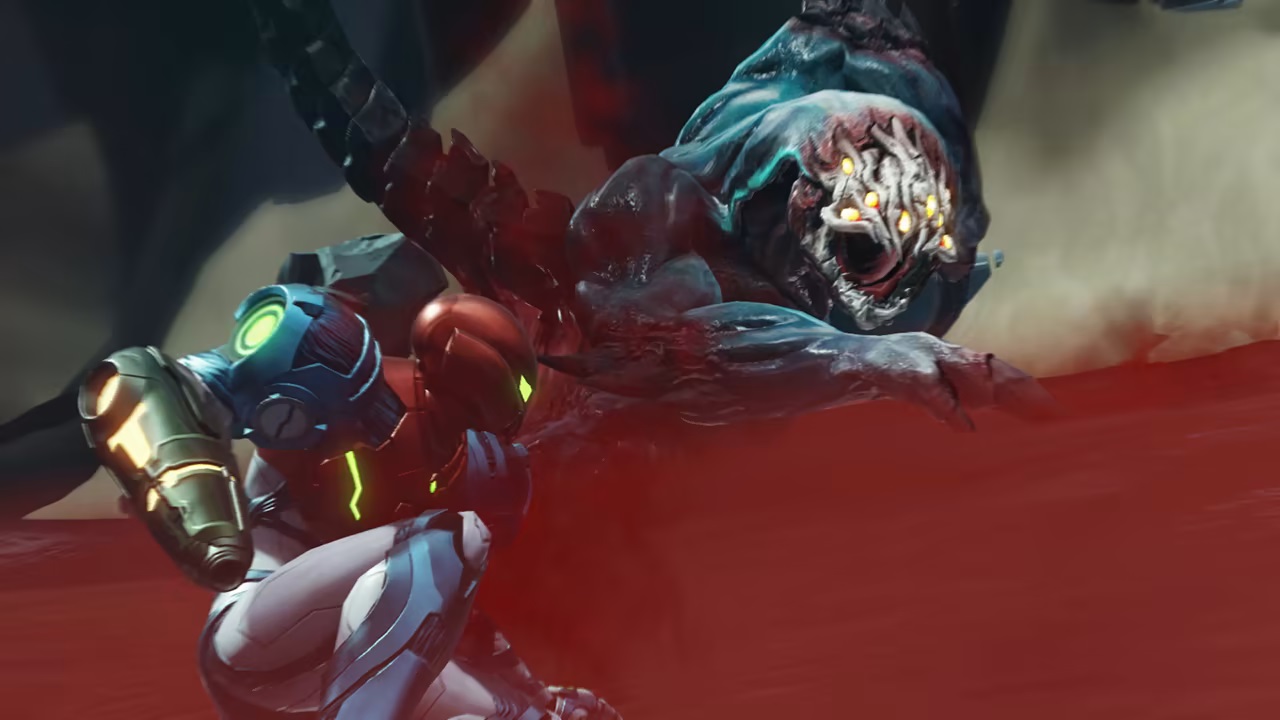[Review] Metroid Dread
Note: we’ve updated this post with a video version of our Metroid Dread review – check it out below.
System: Switch
Release date: October 8, 2021
Developer: MercurySteam / Nintendo
Publisher: Nintendo
Metroid Dread still feels a little surreal. The shock of a new, original 2D Metroid was palpable when Dread was announced, but the more one thinks about it, the more amazing it seems. It’s the realization of a 15 year old concept that has gone through multiple cycles of early development and dormancy. It’s the first original 2D Metroid in almost two decades, a span of time in which an entire genre named after the series has sprung up and seen thousands of games following in its footsteps. It’s a game that has expectations to live up to that seem almost unfair but somehow manages to exceed them. Metroid Dread is real, and it’s a masterpiece.
Dread begins with the Galactic Federation receiving a disturbing transmission of an X Parasite, thought to be eradicated after the events of Metroid Fusion, on planet ZDR. It is determined that E.M.M.I. robots are best equipped to investigate due to their inorganic nature and durability, but after all communication is lost with all seven of the machines dispatched to ZDR, Samus is sent to ascertain the truth. Immediately upon landing, she is easily overpowered by a mysterious yet familiar figure, and in a surprise twist that is sure to shock longtime Metroid fans, loses most of her powers. Thus, Samus is left with several questions to answer as she explores ZDR: who sent the transmission, are the X Parasites truly still alive, what went wrong with the E.M.M.I., and just why was she spared by her newfound foe?
There’s an air of mystery throughout Samus’s adventure on ZDR, and it’s just one of the ways in which Dread creates the atmosphere longtime Metroid fans have come to want. The world of ZDR feels appropriately alien and lonely, although somewhat less so due to the periodic check ins with Adam. The environments feel more alive than they ever have in a Metroid game, with lots of interesting details and dynamic elements in the backgrounds such as wildlife or soon-to-be enemies stalking Samus until they appear before her. While Dread does not feature the kind of soundtrack one might expect from a Metroid game, it does boast excellent sound design that further adds to the isolated and creepy nature of the world. Dread does not simply give fans what they expect, however, as it adds its own elements to create a tense atmosphere: namely its approach to combat and Samus’s encounters with the E.M.M.I.
While the reason the E.M.M.I. went rogue isn’t explained until late into the game, one thing is clear early on: they are not Samus’ side. The machines pick up on minute sounds Samus makes, shown visually by yellow circles around her, and once she’s in their sights, they will relentlessly give chase. A one-on-one fight with an E.M.M.I. is impossible under most circumstances, so there’s only a few options available when faced by the threat: run out of their designated zone, use the cloaking ability to hide until they pass, or get lucky with a difficult to time counter just before they land a fatal blow. Until Samus is ready to take them on, the best advice is to take a stealthy approach and not get detected in the first place, but rest assured, the time to strike back will come.
Dispatching an E.M.M.I. requires a specific temporary power up obtained from a mini boss in each area and is largely a cool cinematic showpiece rather than a typical Metroid boss fight. As Samus stands locked and loaded with the power up, the camera perspective shifts to a 3D space, and the biggest challenge is finding the right area on the map to blast her robotic pursuer. It’s a satisfying feeling to do away with each of the menaces, but there are only as many of these encounters as there are E.M.M.I in the game. The bulk of Dread’s combat takes place on the traditional 2D plane, and I can say without reservation that it’s the best combat has ever felt in a Metroid game.
Between Samus’ speed and movement options such as her slide and dash, her counter, and the ferocity with which enemies attack, combat feels extremely fast-paced in Dread. Quick decision making and precision are often required, and there are a myriad of power ups and abilities at Samus’s disposal for overcoming the relentless challenges. With that kind of challenge and pace, tight and responsive controls are a necessity, and MercurySteam successfully delivered. Despite squeezing seemingly everything they could out of the Switch’s control scheme by the end of the game, the layout of the numerous weapons and power ups still felt mostly intuitive. While the basis of much of Samus’ offense is her tried and true beams and missiles, her counter also plays a key role in Dread’s combat.
The counter that was first introduced in MercurySteam’s first foray into the Metroid series, Samus Returns, plays an even more vital role in Dread. Most normal enemies have an attack that can be countered, and while the timing to perform the counter can vary from right before the enemy attack connects to the startup animations before the actual attack, mastering the counter early on is important to keep battles from devolving into slugfests. In addition to making the combat feel more snappy, a successful counter and follow up shot will also lead to enemies replenishing much more of Samus’s health and missile supply than they normally would. Counters can be performed while standing, running, jumping, and holding onto a ledge, and it’s clear that they were intended to be an important part of the combat. This extends beyond normal encounters, as the counter often plays a pivotal role in Dread’s boss fights as well.
Much like the combat, the bosses in Dread are the best in the series, with the game successfully achieving the golden standard of being challenging but fair. Attack patterns for bosses are varied, but they do an excellent job of telegraphing where the hitboxes are and which space on the screen is safe to occupy (although getting there in time can still be a challenge). Most bosses have several phases, but there are often opportunities to replenish health and missiles as well. Finally, there’s a high level of precision required, but the tight controls give players the means to achieve it, so any mistakes feel more like the player’s fault than the controls holding them back. Finding the right moment to strike and attacking the boss’s weak points are still the name of the game, but the aforementioned counter factors into many boss fights as well, either giving Samus an opportunity to get extra damage in or being a necessity to advance or finish certain battles. If I had one misgiving, it’s that certain mini bosses become repetitive by the end, but it’s a small complaint, as boss battles are largely yet another area where MercurySteam knocked Dread’s design out of the park.
While combat is undoubtedly at the forefront of Dread more than previous Metroid entries, make no mistake, exploration is still the game’s calling card. ZDR is a sprawling planet made up of nearly many different zones, with a lot of environmental and structural diversity. Not only is there a lot to explore and many upgrades to find, some areas will change after certain story events, and something that felt familiar an hour ago can feel completely foreign when you revisit it. Backtracking and pushing further into areas after obtaining new abilities is, as expected, the crux of exploration, but what’s impressive is how smooth that experience is.
Despite having such a large map to explore, Dread more than lives up to the standard for this type of exploration set by Super Metroid. Outside of the first couple of hours where you can find yourself lost at times, exploration in Dread feels incredibly clever and intuitive. While there are several places to potentially go right after obtaining a new ability, the game will almost always push you in the “right” direction in ways you wouldn’t even realize if you weren’t scrutinizing the level design. At the same time, if you decide to explore elsewhere instead, not only is there likely some form of reward waiting for you, but the game will often still manage to subtly guide you back in the direction of making progress. I can’t imagine how much thought went into making the exploration feel this open ended and organic while still remaining fun, but the result is nothing short of impressive.
If there were any remaining concerns about MercurySteam understanding what makes Metroid tick, those doubts have been utterly put to rest. The team got the gameplay right everywhere they needed to, pushed the envelope in several areas at the same time, and, in tandem with Nintendo, also delivered the best portrayal of Samus to date. Whether she’s nonchalantly charging her cannon as a hideous monster so large it can’t even fit the screen roars an inch from her face or she deftly dodges fatal attacks during a cinematic, Samus exudes the cool and confident persona fans have come to associate with her while barely saying a single word throughout the game. To top it all off, they give us a truly spectacular ending sequence, with more than one major surprise involving our heroine.
The Verdict
Metroid Dread was billed as a narrative culmination of the series’ current arc by Nintendo, but it’s fair to say that this extends even beyond the story. Dread takes several gameplay elements from the Metroid games that came before it and pays homage to the franchise, which is a welcome sign for fans who waited so long for this new entry, but perhaps more importantly, it isn’t a slave to tradition. MercurySteam and Nintendo managed to successfully tread new ground in several ways while retaining the Metroid DNA, whether it was with Dread’s approach to combat or thematic elements such as 3D angles and stealth sections in exploration. Dread is a best case scenario, having the feel that fans wanted out of a new Metroid game while also giving us something new and exciting. Expectations were through the roof going in, and yet, MercurySteam somehow managed to exceed them. With Metroid Prime 4 also on the way and Dread poised for success on the back of delivering such an amazing experience, it’s hard to remember the last time it felt this exciting to think about the future of Metroid.
Video Version
Metroid Dread copy provided by the publisher for the purposes of this review.




